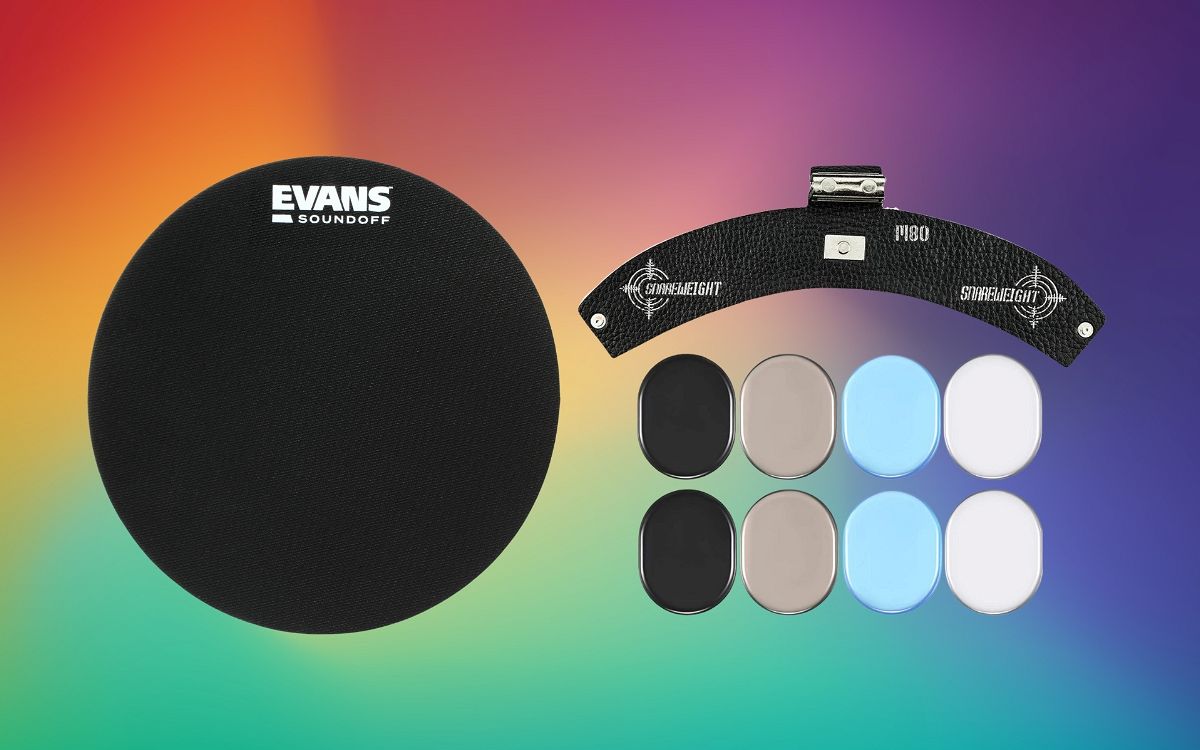Drum dampening is something that all drummers must learn how to do with their instruments. While drums on their own sound epic, they can also produce unwanted overtones, no matter how well you tune them.
This is mainly the case with lower-quality drums with poor tuning, but all drums can be dampened to improve their sound.
For example, professional drummers will typically use dampening in the recording studio to achieve more focused and punchy sounds from the drums that sound better on recordings.
In this guide, we’re going to focus mainly on the snare drum. I’ll share the best strategies for snare drum dampening, along with some other useful tips.
Some of them will be budget solutions that cost no money, while others will require you to buy a few products. Let’s jump in!
Contents
What Does Dampening Mean?
Dampening refers to when you alter the tone of a drum to reduce the overtones and the ring it produces.
Another word for it is muffling. You use specific techniques to muffle snare drum tones, meaning that you cut out the higher frequencies that are harsh, and you cut off a bit of the resonance.
The amount of snare dampening you provide determines the amount of overtone the snare drum produces.
Having nothing on the snare drum gives you an open tone, while placing muffling on the snare gives you a very short tone.
You may find yourself spending a lot more time on snare dampening than you will on tom dampening. This is because snare drum tones are much more complex and harder to control. So, if you’re looking to control snare sustain, here are a few ways of doing it.
Ways of Dampening a Snare Drum
Tuning
Tuning your snare drum well is the best way of dampening it without adding any sort of muffling. This is how you get the most authentic tone from your snare drum.
You’ll find that if your snare drum is slightly out of tune, it will produce more harsh overtones when you hit it.
So, make sure to have all the lugs of your snare at the same tension to create an even surface. You can do this by ear, but it’s much easier to use a drum tuning tool. It will allow you to get perfect tension settings across all your rods.
This should be the first step in dampening your snare drum, as a well-tuned snare will need less dampening. The less dampening you have, the less tone will be killed.
Placing Muffling Inside the Snare Shell
If you don’t want to put anything on top of your snare drum, another helpful technique to control the sustain is to put things inside it.
Some snare drums have built-in mufflers that make contact with the bottom side of the head. Those are incredibly useful, and they keep the look of the outside of your snare drum very clean. You’ll only find systems like this on top-tier snare drums, like the Benny Greb Signature Snare.
If you want to apply muffling yourself, you could place cotton balls inside the snare shell. It will dampen the sound and act as a mini compressor.
Alternatively, if you don’t want to remove the drumhead, you can break up the cotton and push it through the snare hole with a thin hex key or a carpentry nail.
Snare Muffling Tools
There is a myriad of muffling tools available out there. Since the snare drum is the most common drum that people wish to dampen, there are plenty of muffling tools available that are designed for snare drums specifically.
These types of products are used by professionals both live and in the recording studio. Gels, rings, and leather cuts that attach to the drum hoops are what you’ll find most easily.
However, you can also use items from your household to dampen your snare drum. Those are completely free, but they’re not optimized for the drums. Here are some of the most popular options available.
Top Snare Drum Muffling Tools
Drum Dampening Pads
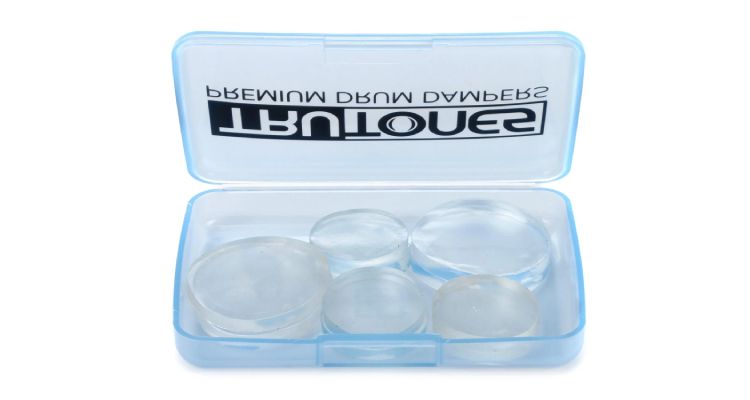
Dampening pads such as these Revolution TruTones Dampeners are arguably the most popular muffling tool in the drumming community. They’re small pieces of gel that you can stick to the batter head of your snare drum.
The more pieces of dampening pads you use, the more muffled the snare drum will be. You can also rip a piece in half to get even less dampening if needed.
You can expertly place the pads to get different dampened sounds. It’s quite normal for drummers to place one wherever the snare drum microphone is facing or at the 12 o’clock position.
These are popular as they’re inexpensive and very easy to use. However, they get lost easily when playing gigs, and they start to mark your skins in hot weather conditions.
Snareweight
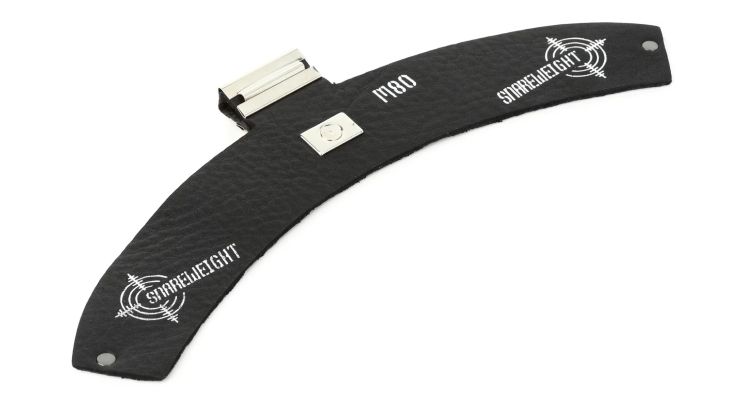
Snareweight is a single brand with a few muffling tools, but their Snareweight M80 and M1b mufflers are my suggestions to check out here.
These are leather straps that you latch onto the rim of your snare drum. They dampen the snare, but they lift up every time you strike the head, stopping them from killing any of the attacking tones of the snare.
These last a lot longer than Moongels or other gel-like dampeners, making them a better investment. The larger straps have magnets that allow you to fold them over to provide less dampening, which is great!
Dampening Rings
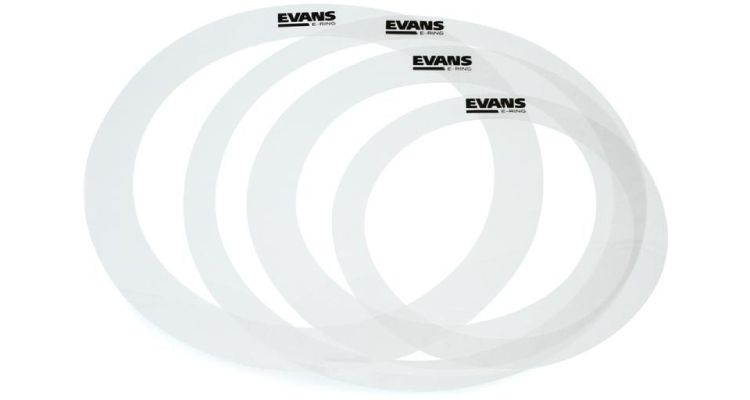
Dampening rings aren’t as common these days, but you can still find them being sold by certain brands. A good example is the E-Rings by Evans.
Dampening rings are plastic rings that are made to fit around the edge of your snare drum.
They work well to dampen your snare, but they don’t give you any control over how much dampening you get. This makes them one of the least versatile dampening options. It’s also the reason why most professional drummers don’t use them.
Dampening rings work amazingly well for entry-level drum kits, though.
Big Fat Snare Drum
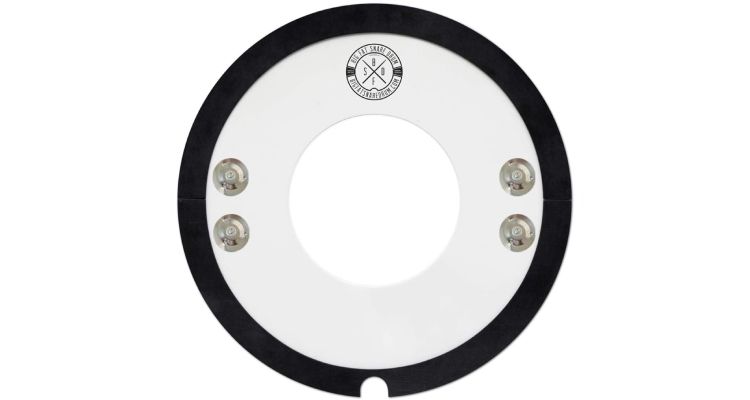
Big Fat Snare Drum is another single company that makes a variety of snare drum dampeners. These are incredibly popular as they muffle your snare and drop the pitch significantly.
If you want to get a deep, thuddy snare drum sound, you should pick one of these up. They’re intended to provide a thick, vintage sound reminiscent of the 80s that I personally really like.
If that’s not the sound you’re looking for, however, I suggest using another snare drum dampener.
Towels
Moving onto some free snare drum dampening solutions, my first suggestion would be to use a towel. If you place a towel over the entire surface of your snare drum, you’ll get a similar sound to what a Big Fat Snare Drum dampener will offer.
If you don’t want as much muffling, you can fold the towel and only place it over a portion of the snare drum. It’s best to use a thin towel for this strategy, as a thick towel will dampen the snare drum a bit too much.
Wallets
Another free option to use is your wallet. Drummers end up doing this a lot at gigs as they always have their wallets on hand. A thick padded wallet will provide a decent amount of dampening to your snare drum and cut out the overtones very nicely.
However, you need to place the wallet on the snare in a way that doesn’t allow it to move around as you hit the batter head. Not all wallets are designed in a way that allows this.
Putting a wallet on a snare drum is the quickest and easiest free way to dampen it.
Muting Pads
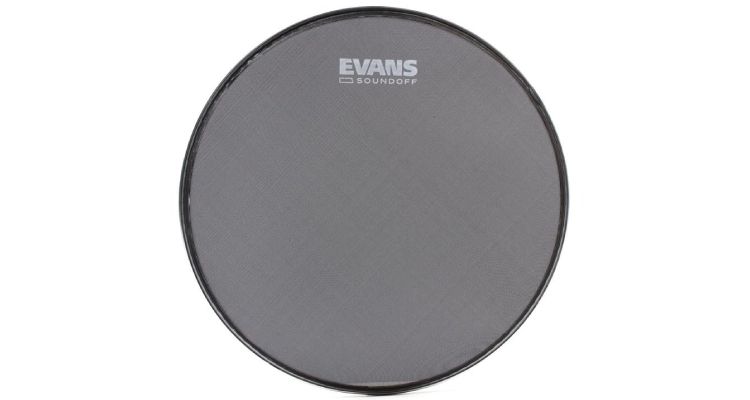
Lastly, we have muting pads, and these are dampeners that completely cut away most of your snare drum tone. These are meant for practicing on your acoustic snare without making a big noise.
If you just want to cut away a few overtones, don’t get these. If you want to dampen your snare so much that you won’t bother the person in the next room, then getting one of these may be a good idea.
The Evans SoundOff pads are a good example.
Snare Drum Dampening FAQs
What Do Dampeners Do?
Dampeners provide muffling to your snare drum. They cut out the harsh high frequencies that are hard to listen to, and they take away a lot of the resonance of the snare drum. The result is that your snare drum starts to sound better.
Do Drum Dampeners Work?
Yes, but some drum dampeners work better than others. The best kinds of dampeners are ones that allow you to control the level of dampening you require.
When you’re in control of the dampening, you can better manage the level of overtones and sustain you want from the drums to help you find your perfect tones.
How Can I Make My Snare Drum Quieter?
The more dampening you apply to your snare drum, the quieter it will get. You can use a snare mute pad to make it very quiet. Any thick material that covers the surface will drop the volume significantly.
Wrapping Up
Dampening your snare drum is an easy process when you have the right tools to do it. You can easily do it for free, but you’ll find more success and joy while using dedicated dampening tools from drum brands.
Using Moongels or Snareweight dampeners on your snare drum also looks more professional than duct tape or a wallet.
They also stay in place better and offer greater flexibility for achieving your ideal snare drum tones.
Just remember that tuning your snare drum well is the first step to getting an amazing sound before applying any dampening.

